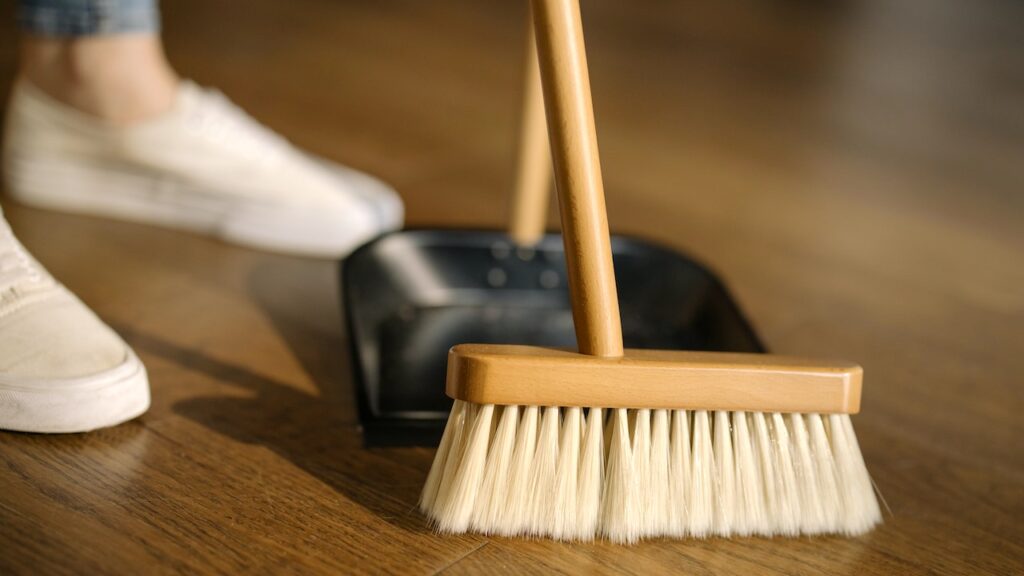It’s mold
If you have to ask yourself whether a dark stain, patch or pile of tiny particles around your home is dust or mold, it’s probably best to assume that it either is mold, or it contains mold. Why?
Because of the two, only mold really requires special handling.
And, because mold lives among and loves dust, and thus is very likely to be mixed in among any dust bunnies or dusty and dirty build ups around your house anyway.
And… something has already raised red flags for you about it, and you hit Google for an answer.
Assume it’s dirt when it’s actually mold, and you could have problems.
Assume it’s mold when it’s actually dirt, and you’ll only have erred on the safe side.
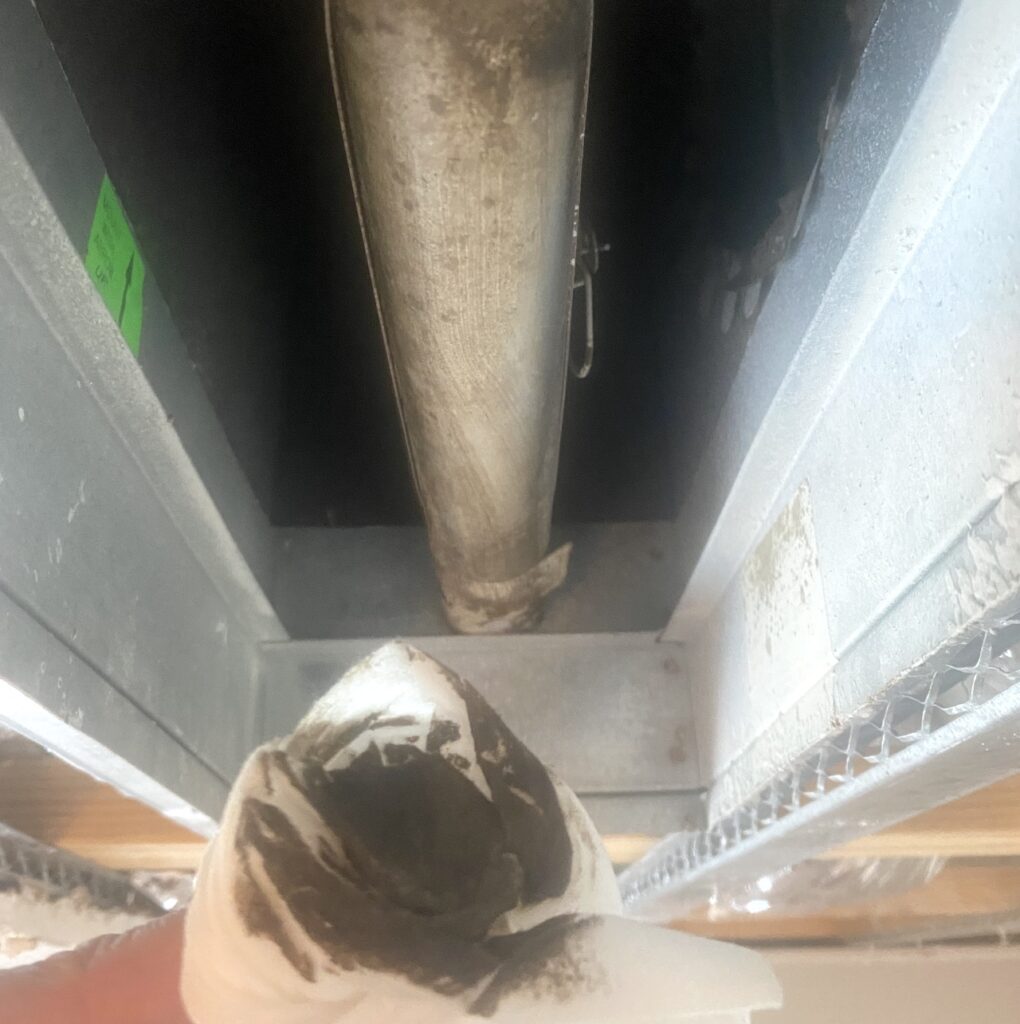
It’s dust, dirt, dead skin cells, soap scum, pet dander, and mold!
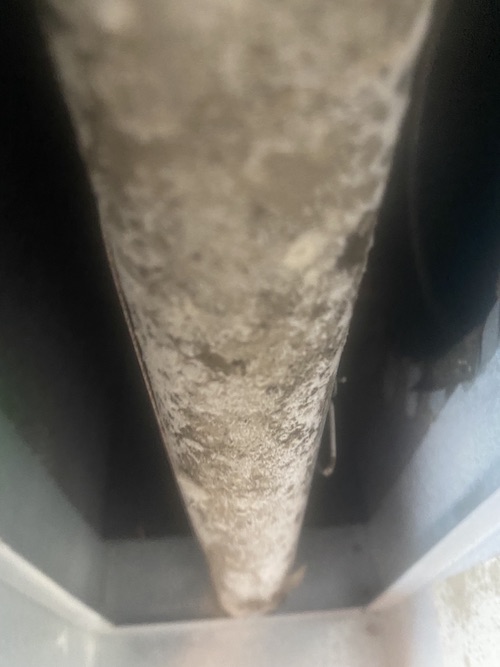
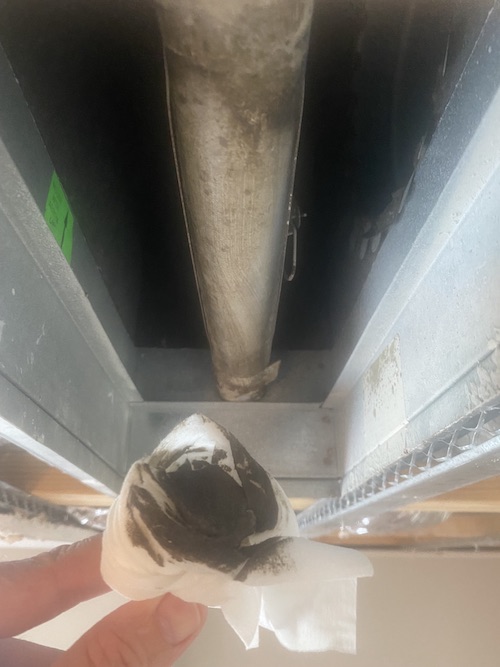
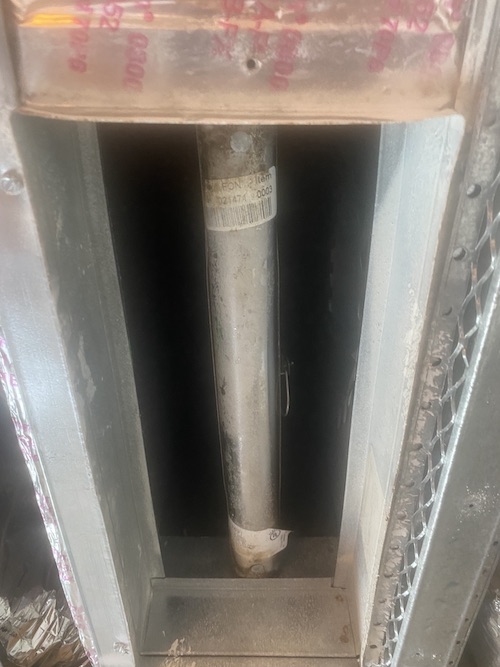
Testing ‘Not Recommended’
When your mold remediation company tells you “that’s mold,” they’re saying so based on their knowledge of where mold grows, what mold looks like, what it smells like, and the symptoms it can cause in some people.
You can pay for testing—and there are times when it’s good to do so (such as if you plan to take legal action, or need to spur your landlord into action by proving there’s mold present), but even the EPA doesn’t advise testing for mold if the mold is already visible. They just recommend removing it.
(Maybe think of it like a fine dinner—if the chef tells you it’s chicken, and you see white meat, shaped like some part of a chicken, we’ll all assume it’s chicken. And we’d be right 99% of the time.)
Whether something is actually mold or not is determined only by tests, which are conducted in the field by mold inspectors, and then sent off for interpretation to a laboratory.
So, microbiologists are ultimately the only ones who can tell you whether you have mold or not—but mold remediation specialists are usually pretty good at coming to the same conclusion without testing.
If you ask for mold remediation, or you suspect you have a mold problem, testing is typically reserved for after remediation is done, to ensure it was done well — “Surface sampling may be useful to determine if an area has been adequately cleaned or remediated.” – U.S. EPA
Further, according to naturopathic doctor and mold expert Dr. Jill Crista, in her 2018 book, Break The Mold, “People often mistake it for dust or carpet stains,” and “Speaking of dust, it’s one of the easiest ways to feed mold,” she writes.
“Simply put, dust grows mold.” – Dr. Jill Crista
Mold inspector looks for dust as clue to mold growth
In this January 2023 video, mold inspector and Got Mold founder Jason Earle shares that when inspecting a home for mold, he is looking first and foremost for moisture, and, secondly, for “areas that appear dusty.“
Why?
“Most mold growth initially colonizes on household dust,” he says.
“Mold isn’t just in there eating everything, it’s actually eating the stuff that’s easiest to eat. And dust is tiny little broken pieces of building materials, and skin cells, and it’s already sort of pre-chewed if you will.”
High humidity will cause droplets to form on surfaces, which then activate the mold spores that are in that dust, he explains.
Sometimes, mold will be very easy to identify. For example, when you see a textured patch of dark green and black patterns on the wood beneath a sink in the vanity or kitchen, it’s pretty tough to mistake that for dust or dirt.
But it isn’t always so simple to tell whether a substance is mold, dirt, or something different. If you find something sketchy in your home that you think could be mold, the last thing you want to do is ignore it.
But it also isn’t wise to attempt to clean it before knowing what it actually is.
Fortunately, there are several reliable ways to tell the difference between mold and your average dirty spot.
Check the color
Mold is commonly dark green, black, brown, white, or gray. But it can be just about any color.
The first thing you should do when trying to identify mold is examine the color. Of course, if it’s a common color like brown or black, that won’t tell you much. However, if the spot you’re inspecting is an unusual color like green, gray, blue, or even pink or purple, that’s a pretty clear indicator that you’re looking at mold. That said, one of the most common types of mold you’ll find in your household is black mold, so you may need to go beyond the color to know for sure what you’re dealing with.
Check the smell (without sniffing it)
One of the defining characteristics of mold is its distinct musty odor. While you definitely shouldn’t ever take a direct whiff of something you think may be mold, you should typically be able to smell it just by being in the area. The odor is somewhat similar to wet dirt, but it’s usually stronger and more unpleasant. Some people have compared the smell to that of rotting leaves or a pair of old, wet socks. So, if you know how to identify it, the odor should be hard to miss.
Check the texture
If the appearance and odor of the substance are inconclusive, you can always check its texture. Some types of mold have an unusual fuzzy texture, which you should be able to identify visually. Black mold, on the other hand, tends to be slimy and wet. Instead of touching the unidentified substance with your bare hands, rub it gently with a paper towel to get a feel for the texture of its surface. To be as safe as possible, you should also be wearing rubber gloves, a face mask, and safety goggles during this process. If the dark spot turns out to have a slimy, slippery texture, it’s almost certainly mold.
Consider where you found it
Whenever you’re trying to distinguish mold from dirt, you should consider the location of the substance. While there are many different areas of your home where mold can grow, the presence of moisture is always required. So, if the spot you’re trying to identify is in an entirely dry area, it’s extremely unlikely that it could be any type of fungus. Additionally, you should consider the temperature of the area. Generally speaking, mold can’t grow anywhere with a temperature below 40 degrees Fahrenheit. So, if the questionable substance is located in any type of refrigerated or freezing area, you can safely assume that it isn’t mold.
Test it with bleach
If you’ve checked the appearance, odor, and texture and considered the location but remain uncertain, you can always resort to the bleach test. This test is based on the fact that funguses like mold and mildew react differently to bleach than dirt or dust do. The test itself is very simple.
First, you take a cotton swab and dip it in a diluted bleach mixture—the recommended blend is one part bleach to 16 parts water. Then, you gently dab the surface of the unidentified substance with the bleach-soaked swab.
If the spot is mold, its color will lighten significantly within a minute or two. If there’s no noticeable change, it’s probably just dirt. While conducting the bleach test, it’d be wise to once again equip yourself with gloves, goggles, and a face mask.

